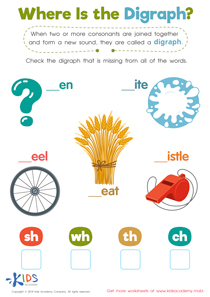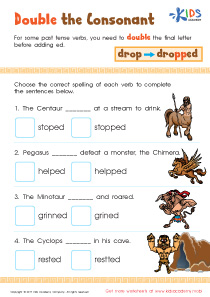Normal Consonant Blends Worksheets for Ages 5-6
5 filtered results
-
From - To
Introduce young learners to the world of phonics with our "Normal Consonant Blends Worksheets for Ages 5-6." These engaging and educational worksheets help children practice and master common consonant blends such as "bl," "cr," and "st." Designed for young minds, each worksheet features fun activities like tracing, matching, and filling in the blanks, which make learning both enjoyable and effective. Suitable for home or classroom use, these resources are perfect for enhancing reading and spelling skills. Start building a strong foundation in phonics and boost confidence in early readers with our carefully curated consonant blends worksheets.
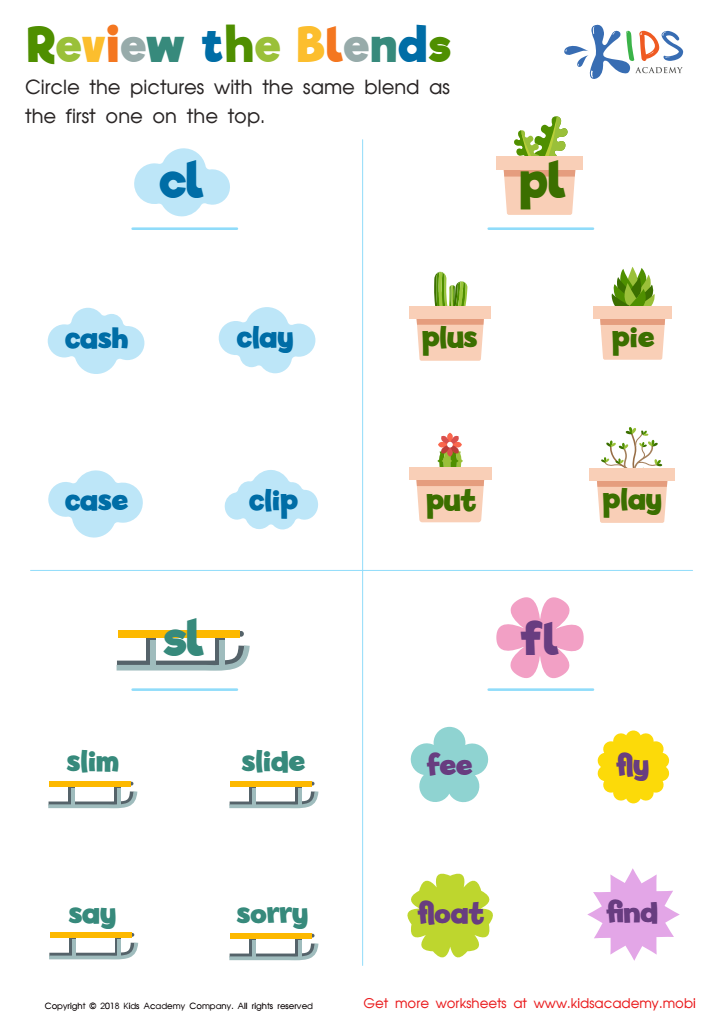

Review the Blends Worksheet
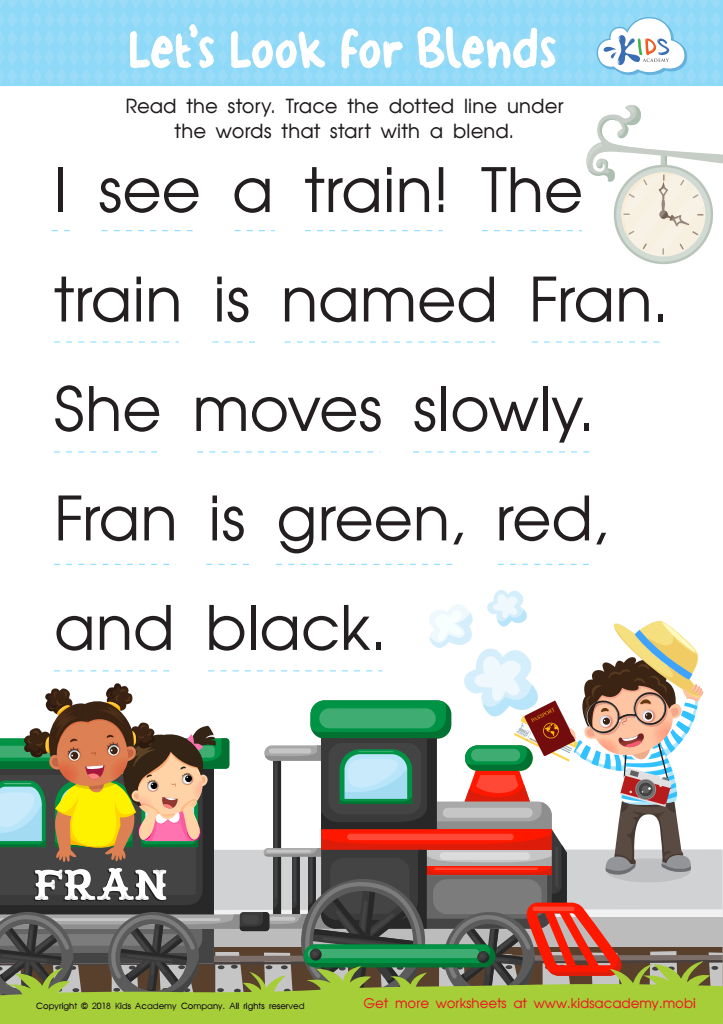

Let's Look for Blends Worksheet
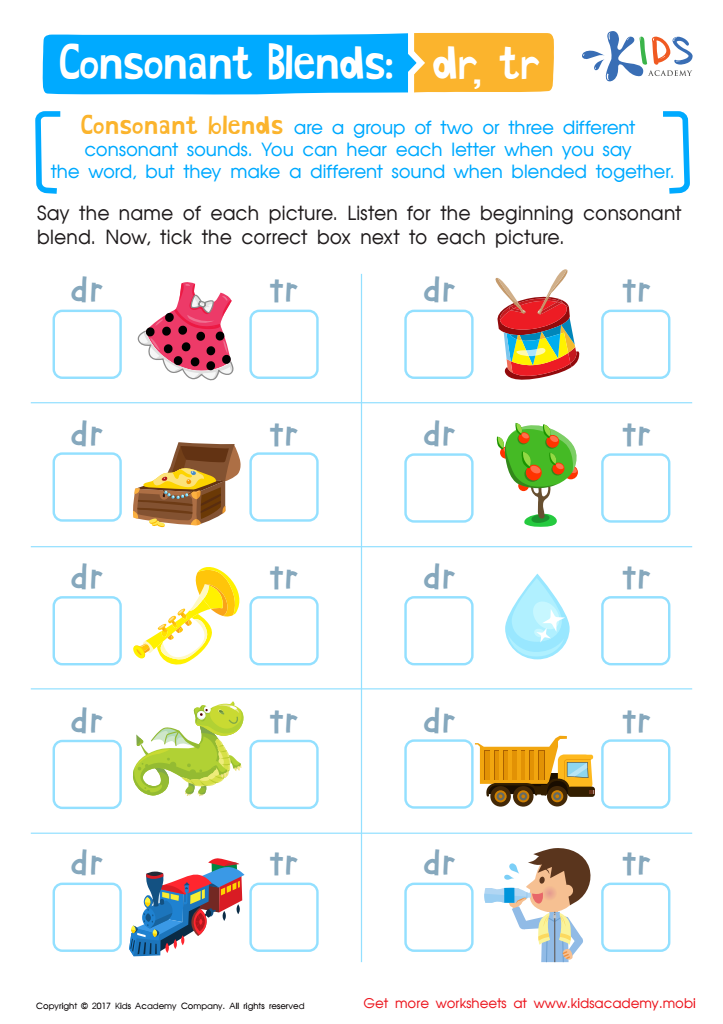

Consonant Blends: "Dr" and "Tr" Printable
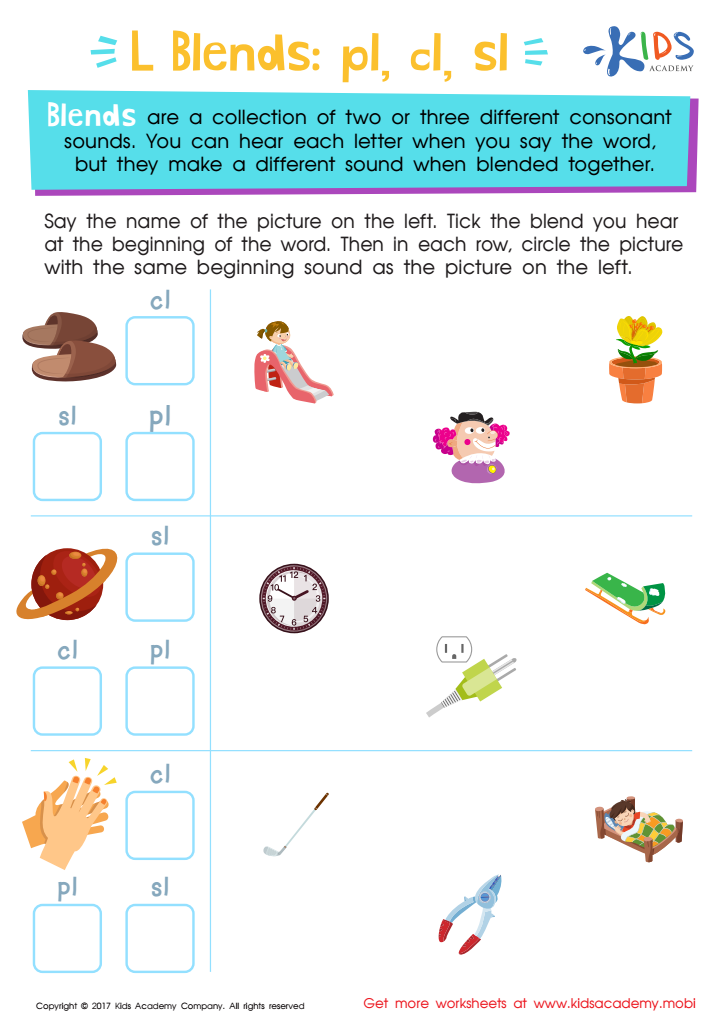

L Blends: "Pl", "Cl" and "Sl" Printable
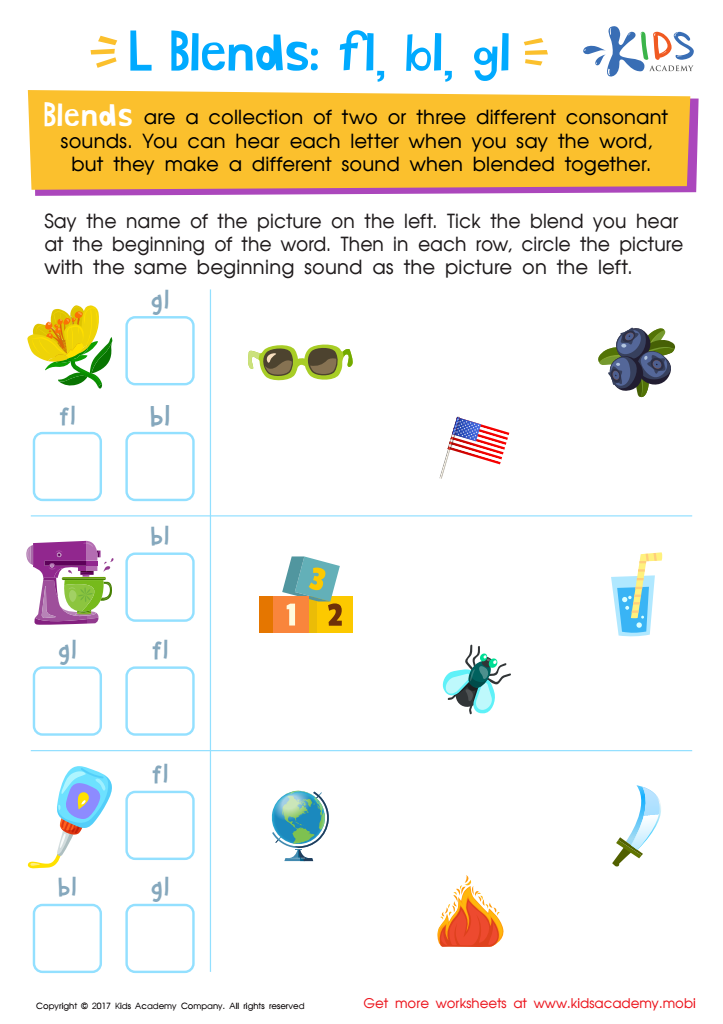

Blending Consonants: "Fl", "Bl" and "Gl" Printable
Parents and teachers should care about normal consonant blends for children aged 5-6 because this stage is critical for developing foundational literacy skills. Consonant blends are combinations of two or more consonants where each consonant sound is heard, such as "bl" in "blue" or "st" in "star." Mastering these blends is essential for young readers because it enhances their ability to decode words rapidly and accurately, making reading a less daunting task.
At ages 5-6, children are typically in kindergarten or first grade, where they begin to transition from recognizing letters to reading words. Understanding consonant blends allows them to read common words independently, which boosts their confidence and nurtures a love for reading. Additionally, being proficient in recognizing blends helps with their spelling and writing skills, as they learn the patterns that comprise the English language.
Phonemic awareness, including the ability to identify and manipulate consonant blends, is directly linked to future reading success. Therefore, early proficiency reduces the risk of future reading difficulties and contributes positively to overall academic achievement. Engagement with consonant blends helps children become more fluent readers, preparing them for the more complex texts they will encounter as they progress in their education. Parents and teachers play vital roles in supporting this learning phase through interactive activities, reading aloud, and providing thoughtfully guided exposure to blends in various contexts.
 Assign to My Students
Assign to My Students





